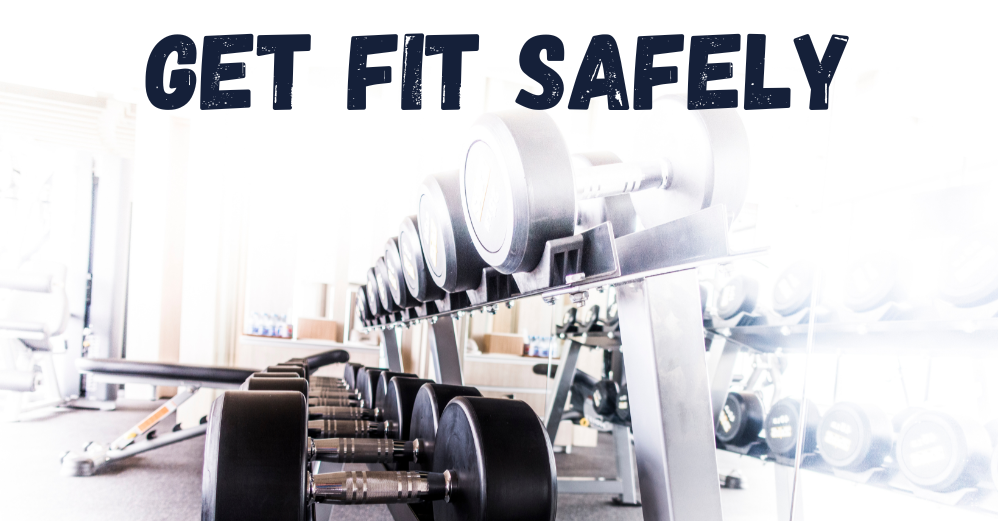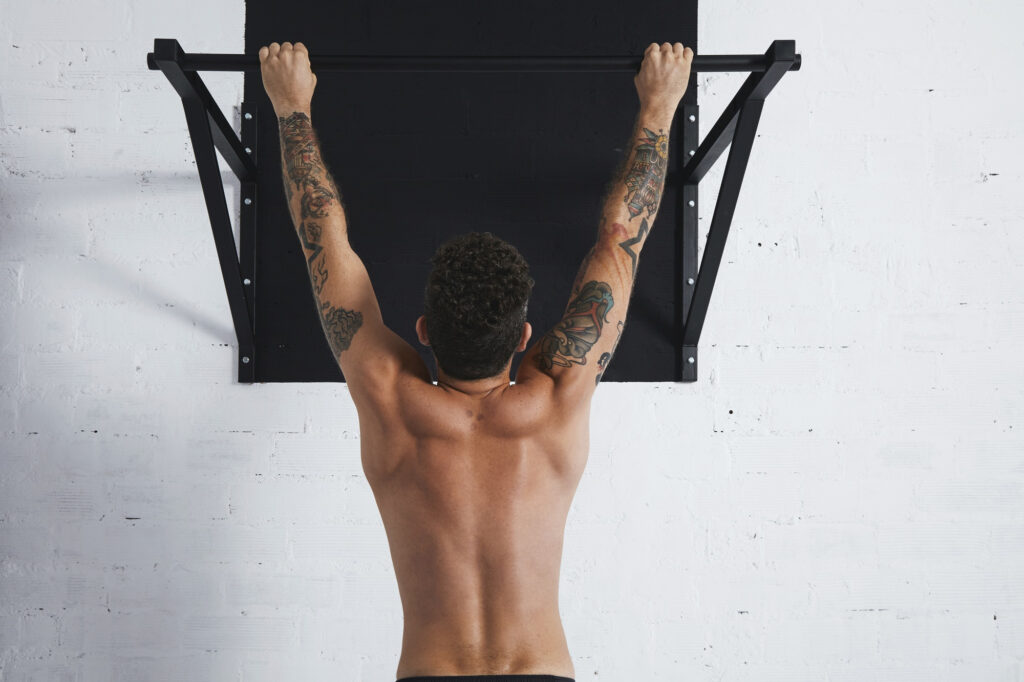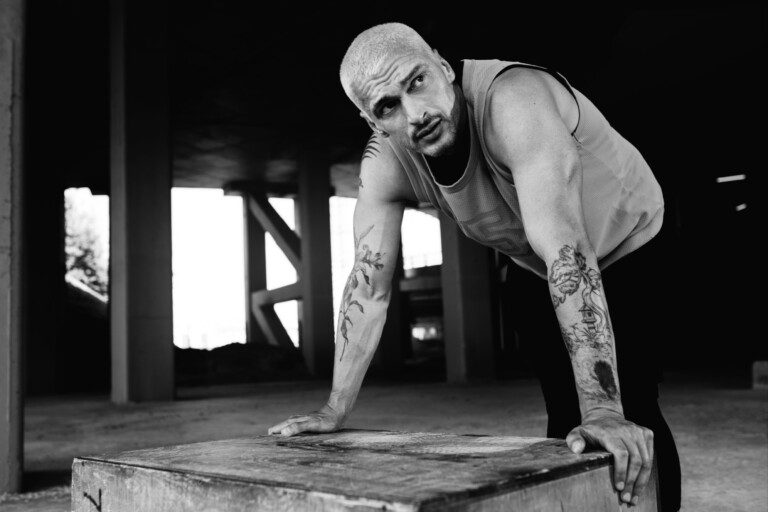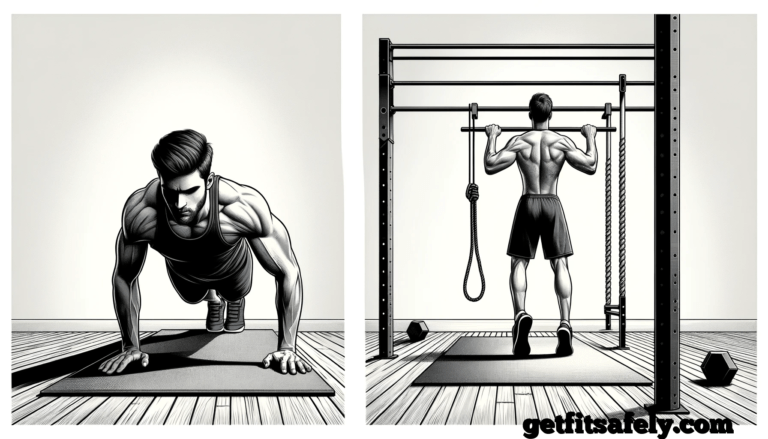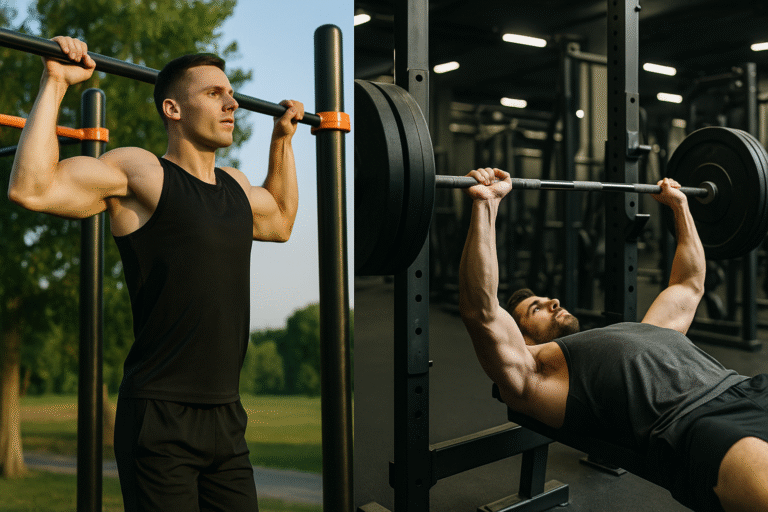You walk past the mirror almost by accident.
Sweaty shirt, savage pump after pull-ups, and you say, “Let me take a look at my back, just for fun.”
You turn. Snap a photo. And you see it.
That difference you can’t unsee anymore.
One lat is wide, thick, toned.
The other one… yeah, it’s there, but clearly less engaged.
You wonder: “How is it possible that I always do bilateral exercises, yet I’m only growing on one side?”
Sounds like an X-Files mystery, but nope — the answer is much more real, physiological, and (most importantly) fixable than you think.
Your dominant side is working overtime. But not out of generosity.
We all have a preferred side.
It’s not just a matter of “right or left hand”: it’s a deep neuromuscular setup, almost automatic.
From how you grip the steering wheel, to the way you sleep, to how you throw a ball or open a jar.
That side has years — even decades — of head start in coordination, motor control, and reactivity.
When you jump on the bar to do pull-ups, you think you’re splitting the effort equally.
But the truth is your brain instinctively gives the “hard job” to the more reliable side.
In technical terms, it’s called “adaptive motor dominance”: the body relies on the highway it knows best — and throws the weight there.
The result?
The dominant side pulls hard.
The other one just… does its best to keep up.
Technique is only half the story. The other half is perception.
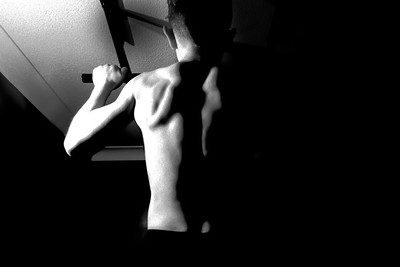
You might have seemingly perfect form.
Video footage, checked posture, scapulas down, active core.
But all of that isn’t enough.
Because there’s one thing technique can’t show: where you’re actually applying force.
Cameras don’t reveal if the left lat is fully contracting or just hanging out like a spectator.
They don’t show whether you’re intentionally activating both sides.
And that’s where a key concept comes in: the internal perception of muscular effort — proprioception.
Those who can contract every single fiber symmetrically… are professionals.
Everyone else needs to learn it.
The sneaky micro-compensations that mess you up
You’ll feel like you’re moving straight.
But often during a pull-up:
- One shoulder lifts before the other
- You twist your torso slightly without realizing it
- Your dominant elbow starts half a second earlier
And that’s enough to make the dominant side work harder — gaining more volume, recruitment, and hypertrophy.
Micro-compensations aren’t inherently wrong.
They’re natural.
The problem is they add up, become habit, and slowly create a growing imbalance that’s tough to undo after months.
A “mostly even” grip is not enough. Here’s why.
On paper, you grip the bar symmetrically.
But it takes so little to throw it off:
- One thumb slightly higher
- One side gripping with more supination
- A natural tilt in your torso while hanging
And boom.
The tension shifts.
Subacromial space changes. Pulling angle changes. Load on the lats changes.
It’s not about “visible millimeters,” but functional millimeters — the ones your nervous system feels even if your eyes don’t.
Your issue isn’t strength. It’s distribution.
When pull-ups become a personal challenge — more reps, more pump, more “war” — it’s easy to lose sight of one thing:
You’re not recruiting both sides equally.
And that’s not just an aesthetic issue.
It’s a functional limitation.
When one side dominates, it tends to:
- Fire first in the early part of the movement
- Compensate when fatigue sets in
- “Steal” part of the concentric phase from the other side
The result?
Dominant side in constant adaptive overload.
Weaker side in chronic understimulation.
That’s why continuing with high-volume sets, hoping it will “even out eventually,” is a classic — and counterproductive — mistake.
Instead of closing the gap, you widen it.
You need to interrupt that pattern.
Not by quitting pull-ups — but by rebuilding the movement consciously.
Sometimes it’s as simple as:
- Lowering the reps per set
- Using isometric holds only on the weaker side
- Introducing voluntary pre-movement contractions to activate it first
The right question isn’t “am I pulling hard?”
It’s “am I pulling symmetrically — even on a neural level?”
Because when the answer is yes, every single pull-up stops being mechanical…
And becomes a complete, balanced, personalized stimulus.
How to fix this imbalance without throwing everything away
You need a progressive, not radical, approach.
Here’s what you can start integrating:
- Specific unilateral warm-up
Use bands or cables to activate the lazier lat. Even just 2 sets of 15 reps before hitting the bar. - Film your pull-ups from behind or from the side
Your eye won’t catch everything — but the camera will. Watch your pull rhythm, scapular symmetry, torso line. - Add unilateral exercises to your program
Dumbbell rows, single-arm lat pulldown, incline bench pulldown. But done well — not randomly. - Lower intensity. Increase connection.
Do fewer reps, but feel every phase. Control. Go slow. Be precise and relentless. - Work on postural awareness outside the gym
Notice how you carry your backpack, how you sit, which side you use for everything. Dominance isn’t born in the gym — it’s born in life.
Does it take time? Yes. But it truly transforms you.
This isn’t about waiting for it to “sort itself out.”
Muscular symmetry must be built — methodically.
And a lagging lat doesn’t just wake up one morning because you visualized it growing the night before.
You need targeted stimulus, neural coordination, and above all: the will to reprogram old habits.
But here’s what actually happens when the weak side starts catching up:
- The eccentric phase (the descent) becomes more stable — no longer biased toward one arm
- Lat activation is more symmetrical right from the first few centimeters of movement — you feel it right at the stretch
- Those tiny shoulder or trap aches — often from chronic compensations — disappear
- Execution improves not just visually, but in effort distribution: you pull better, with less perceived effort, and more effectiveness
Let’s wrap with this thought: it’s not a flaw. It’s a chance.
Having one lat behind isn’t a failure.
It’s a real opportunity to improve.
Not just in physique — but in perception, control, and training quality.
That’s where the leap happens — from “I pull to train” to “I train to improve.”
And once you learn to truly engage both sides, your pull-ups evolve.
Your back transforms.
You transform.
And then yeah, you can say it: you’re building a real athlete’s back.
One that doesn’t need perfect lighting to look proud.
One that speaks for itself.

